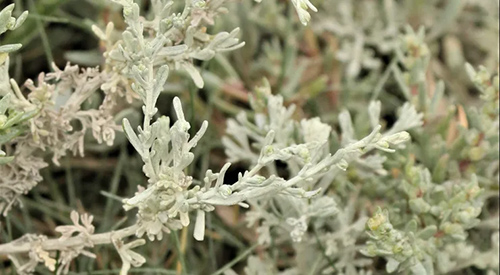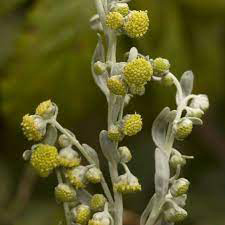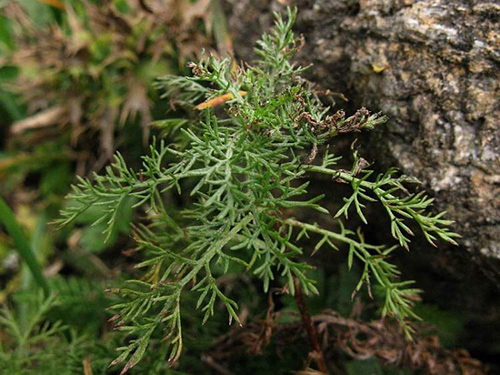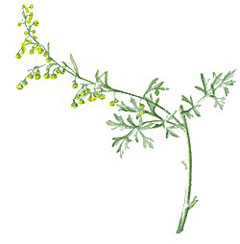Contents

In the 16th century, the mixture of the sea wormwood plant flower heads with those of a similar species, Artemisia cina Berg., or white thyme, was called semen contra vermes, or seed against worms. Sea wormwood has been used since the time of the great Greek physician, pharmacologist, botanist, and author Pedanius Dioscorides as a vermifuge for children.
Scientific Facts
- French: Absinthe de mer.
- Spanish: Ajenjo marino.
- Environment: Coastal regions all over Europe, except the Mediterranean areas.
- Description: Plant of the Compositae family, growing from 30 to 60cm high, covered by a fine layer of hair, and with small, dark yellow flower heads; very aromatic.
- Parts of the plant used medicinally: The flower heads.
Healing Properties and Warning

The flower heads of sea wormwood contain an aromatic essence, santonin, and several mineral salts. The plant’s active component is called santonin, a derivative of dimethyl naphthalene, a powerful vermifuge. These flower heads are especially effective against Ascaris lumbricoides, which are nematode worms similar to earthworms, white in color, from 10 to 25 cm long, that frequently infest the intestines of children. These flowers have also proven effective against other intestinal parasites.

WARNING! Never exceed the prescribed dose since it may provoke nervous stimulation. Never give to children under two years old.
How to use Sea Wormwood
- The powder is made with the dry flower heads ground once. Give it in infusion or mixed with honey for several consecutive mornings. The dosage is from 2 to 5g for children and from 4 to 10g for adults. An hour later, take a laxative. Feces must be inspected to check whether the parasites have been expelled.

Mexican Wormwood
Mexican wormwood (Artemisia Mexicana Will) grows, as its name points out, in Mexico and has similar properties and composition to those of wormwood (it contains an essential oil rich in tuyone) and to those of sea wormwood (it contains santonin).
This essence provides the plant with appetizer, choleretic, and emmenagogue properties. Due to its content in santonin, it is used as a vermifuge. The infusion of this plant is prepared with 10g of plant per liter of water. Drink two to three cups daily.
DISCLAIMER: All content on this website is presented solely for educational and informational objectives. It would be best to not rely on the information provided as a replacement for advice, diagnosis, or treatment from a qualified medical expert. If you are pregnant, nursing, or have any preexisting medical concerns, you should talk to your doctor before using any herbal or natural medicines.
REFERENCES
- George D. Pamplona-Roger, M.D. “Encyclopedia of Medicinal Plants.” George D. Pamplona-Roger, M.D. Encyclopedia of Medicinal Plants. Ed. Francesc X. Gelabert. vols. 2 San Fernando de Henares: Editorial Safeliz, 2000. 431. Print. [sea wormwood plant]
- National Institutes of Health (NIH): https://www.ncbi.nlm.nih.gov/pmc/articles/PMC2758403/
- MDPI Journal: https://www.mdpi.com/1420-3049/27/3/1136
